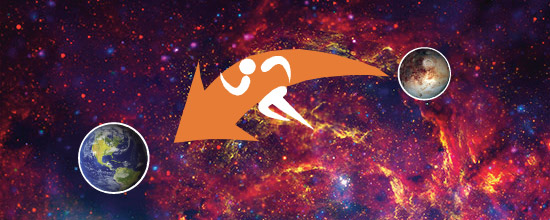
Houlton to Presque Isle via the Maine Solar System Model

On July 15, 2015, UMPI and the northern Maine community hosted an event of astronomical proportions: a 40-mile-long run along the Maine Solar System Model from Pluto (in Houlton) to Earth (in Presque Isle) at the scale speed of light. Why? To celebrate the successful arrival of NASA’s New Horizons Space Mission to Pluto. The space craft left Earth in 2006 and sent its first up-close image of the dwarf planet on the morning of July 15.
This run was completed as a scaled-down, simultaneous version of New Horizons’ initial transmission. Local runners carried “the signal” (an image of the dwarf planet on a thumb drive) up U.S. Route 1, more or less in sync with the actual photograph from the New Horizons spacecraft flyby past Pluto. Traveling at about 7mph/8:20 pace, runners were moving at the scale speed of light!
A celebration and viewing party was held inside Percy’s Auto Sales at the run’s end so on-lookers could cheer on runners at the finish area, enjoy cake, and talk about New Horizons’ first official transmission. For more information about this event, contact Kevin McCartney at kevin.mccartney@maine.edu.
This event was presented by the University of Maine at Presque Isle, the Northern Maine Museum of Science, our many community partners, and the Northern Maine running community
Why does the Maine Solar System Model have two Plutos?
The Maine Solar System Model has two Plutos, one at 40 and the other at 33 miles from the Sun! The original model was finished in 2003 and had the nine planets located according to the average distance from the Sun, which for Pluto is 40 Astronomical Units (miles, at the model scale). However, in 2006 the International Astronomical Union reclassified Pluto as one of three “dwarf planets.” These three dwarf planets were then added to the solar system model, using the present distance (not the average distance) from the Sun as the standard for distance. Since Pluto has a very elliptical orbit and is presently only 33 Astronomical Units from the Sun, a model for the dwarf planet Pluto was placed at that distance.